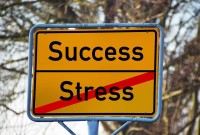- Home
- Business Processes
- Industry Knowledge
- Aerospace Industry
- Automotive Industry
- Banking Domain
- BFSI Industry
- Consumer/ FMCG Industry
- Chemicals Industry
- Engineering & Construction
- Energy Industry
- Education Domain
- Finance Domain
- Hospitality Domain
- Healthcare Industry
- Insurance Domain
- Retail Industry
- Travel and Tourism Domain
- Telecom Industry
- Leadership Skills
- eLearning
- Home
- Leadership
- Problem Solving
- Thinking & Problem Solving Skills
Thinking & Problem Solving Skills
Today's dynamic business world demands that you make decisions that significantly boost productivity and drive competitive advantage. But how do you know whether a decision will benefit the organization? And how do you know that the decisions are based on rational and statistical reasoning? Explore how to become a dynamic problem solver with the skills to make accurate decisions.
Definitions of Problem Solving
Problem-solving is a set of activities designed to analyze a situation systematically and generate, implement, and evaluate solutions.
Problem Solving is the seeking of solutions to problems that arise in an organization.
A problem is an intricate unsettled question: a source of perplexity, distress, or vexation. The problem-solving process leads to the formulation of decisions intended to resolve the recognized problems.
The problem refers to the existence of a gap between where a person is and where one would like to be. The thought process involved in a person's effort to remove obstacles in the way to achieve the goal state is called problem-solving.
Problem-solving begins with a certain original state called the initial state of a problem. Problem-solving behavior begins with an obstacle or difference between the original or initial state and goal or end state. The goal is desired by the operator in the situation and has some properties defined by the operator to convert the problem state into the goal state.
Benefits of Effective Problem-Solving Skills
- Ability to make decisions more rationally and wisely
- Avoid making wrong decisions
- Avoid a variety of irrational ideas, false assumptions, and other emotions
Approaches to Problem Solving
What are the principles of sound decision making and different decision-making styles? How do you measure the return-on-investment of your decisions? How to make decisions with business partners who might not see the world the same way you do?
There are many approaches to problem-solving, depending on the nature of the problem and the people involved in the problem.
Rational Approach
The rational approach involves clarifying, giving a description of the problem, analyzing causes, identifying alternatives, assessing each alternative, choosing one, implementing it, and evaluating whether the problem was solved or not.
Appreciative Inquiry
This approach asserts that "problems" are often the result of our own perspectives or a phenomenon. For example, if we look at a particular situation as a "problem," then it will become one and we'll probably get very stuck with the "problem". The appreciative inquiry includes identification of our best times about the situation in the past, wishing and thinking about what worked best then, envisioning what we want in the future, and building from our strengths to work toward our vision.
Steps in Problem Solving
In an organizational context, one should adopt rational and creative approaches to problem-solving. Using a problem-solving approach and tools you can achieve the right mindset for problem-solving, can brainstorm alternatives, and analyze the problem using analogies, idea nets, and mind mapping and eventually visualize the best solution to your problem. Given below are generally accepted steps to problem-solving:
1. Identify the problem
Problem identification is undoubtedly the most important and the most difficult step in the process. All subsequent steps will be based on how you define and assess the problem at hand. A problem is a situation or condition of people or the organization that exists but members of the institution consider that undesirable.
2. Exploring the Alternatives
The second step in the problem-solving process is to explore alternative solutions to the problem identified in step 1. In this step one tries to generate and evaluate alternatives by doing brainstorming, taking surveys or facilitating discussions.
3. Selecting an Alternative
The third step in the problem-solving model is to select one of the alternatives. After one has evaluated each alternative, one alternative needs to be selected that would come closest to solving the problem with the most pros and minimum cons.
4. Implementing the Solution
The fourth step involves developing an action plan and implementation by arranging funding, resources, timelines, and target objectives. Resources include people, information (data), and things. The plan should state who will do what and when. And finally, implement the action plan to put the decision in place.
5. Evaluating the Solution
Evaluation means to monitor the progress to establish if the situation has changed and the problem has been resolved. Evaluating the results to declare the success of the alternative deployed.
Related Links
You May Also Like
-
We define Lean as the systematic elimination of waste through a continual effort to decrease inefficiency; the lean leader strives to create a more efficient organization. Lean leadership is a philosophy. It is a consistent way of thinking and being in your role as a leader. The focus of this approach is on raising new leaders and help their team embrace a culture of continuous improvement. Learn what we mean by lean leadership style and its principles.
-
Evidence of the medically damaging symptoms of work stress necessitates applying the treatment of stress management. Stress management is increasingly drawing the attention to the management experts not only as a remedial measure but also as a way to resource management. If the workplace can be made a little more lovable the increase in the achievement of the organization may be much time more. If group stress can be removed by introducing group discussions and recreational facilities a long-lasting team spirit may get developed.
-
Concept & Definition of Stress
Stress is a popular expression used by people in day to day life. Pressures of day to day living sometimes necessitate coping or dealing with them and stretch the body beyond its natural capacity. They are called stressors. Stress is a natural, ongoing dynamic, and interactive process that takes place as people adjust to their environment.
-
Creating Highly Effective Teams
How do we create effective teams? What comes to mind when you think about an effective team? High performing teams exhibit accountability, purpose, cohesiveness, and collaboration. It is a team that works seamlessly as a whole. Everyone brings unique talents and strengths and support each other to bring out the best in everyone. How do you create one?
-
Generating Ideas using SCAMPER
SCAMPER is an activity-based thinking process that can be performed by Cooperative learning. SCAMPER is an acronym that provides a structured way of assisting students to think out of the box and enhance their knowledge. This can be used in the organizational context as a technique for creative problem solving and as a toolkit to generate fresh ideas.
-
Tips for Effective Time Management
After studying and analyzing how time is spent, why time is wasted, and where time is wasted you need to decide about the changes required for effective utilization of time. For this purpose, a large number of remedial measures can be taken by you. The first and foremost determinant of a planned and purposeful utilization of time is to develop consciousness of the value of time at all levels of the organization. Planning, goal setting, and defining priorities are concerns to addressed immediately.
-
Time management is the process of planning and exercising conscious control of time spent on specific activities, especially to increase effectiveness, efficiency, and productivity. The best time management techniques improve the ways you work. Time management refers to managing time effectively so that the right time is allocated to the right activity. Learn more about the five steps for effective time management viz. study, identify, analyze, decide, and implement.
-
Understanding Concept of Creativity
Part of your job as a manager is to foster new ideas. But how do you assemble a team with the right mix of skills and perspectives to promote creativity? Creativity is the ability to come up with new and different ideas or breakthrough fixed ways of thinking. Learn how to manage an intellectually diverse work group and their environment to produce more and better ideas that encourage innovation when developing products and work processes.
-
Stress is a product of the busyness of modern life. It has assumed grave dimensions ever since the emergence of industrialism. In fact, stress is a natural, ongoing, dynamic, and interactive process that takes place as people adjust to their environment. Stress can be brought about by positive or negative life events. Distress can cause disease and eustress or positive stress can promote wellbeing and increased productivity. Learn to recognize and be responsible for your stress, and learn the ways to manage stress.
-
The best career choices are ones that match your values. Each person has several values that are important to him. These values are highly personal and knowing them provides a clearer sense of what's most important to you in your life and career. Career values are the beliefs you consider important from a work standpoint. Values help you understand what you want from a job? Explore a few examples of work values that can influence career path and job satisfaction.
Explore Our Free Training Articles or
Sign Up to Start With Our eLearning Courses

About Us
Learning
© 2023 TechnoFunc, All Rights Reserved










